Training Workshops

Carlos Rivera Villarreyes, DHI
FEFLOW Flow and Mass Transport Modeling
Wednesday, December 5, 2018 | 8:30am-4:30pm | Clear Creek Ballroom
FEFLOW brings a wide spectrum of tools to overcome the most simple challenges as well as complex flow and mass transport problems. This workshop will review the multiple modeling options for flow and mass transport using simple yet educational examples, and will focus mainly on higher-level “why” and “when” questions rather than narrow technical topics. This session is practical for both new and experienced users since it will give a quick overview of the software options as well as address punctual conceptual questions. Topics that will be covered:
- Phreatic aquifers, when do we use pseudo-saturation and Richards equation?
- What do you consider a good mesh for flow and mass transport simulations?
- Let’s overcome numerical stability problems together: an overview of the different options: From mesh optimization to upwinding
- Reactive and multi-species transport: FEFLOW, PHREQC or both together?
- Let’s put some density to the problem! In a nutshell we will discuss the necessary settings and concepts for density and viscosity-driven flow simulations
- Matrix and fractures: what can we do for flow and mass transport modeling?
- Yes, we go unstructured! What can you get from it?
- Any other topic (s) you would like to touch base on

Dr. John Doherty, Watermark Numerical Computing Pty. Ltd.
2019 Darcy Lecturer
Better Use of Models in Decision Support: New Developments in PEST and PEST++
Wednesday, December 5, 2018 | 8:30am-12:00pm | Golden Vista Room
This session will focus on the use of models in decision-support and the role that model-value-adding software can play in optimizing their potential in this role. A brief overview of the importance of risk (and therefore uncertainty) assessment in decision-making will be given. Highly parameterized inversion and the use as pilot points as a parameterization device will be discussed. The session will also cover some exciting new developments such as (linear and nonlinear) optimization under uncertainty, and Kalman smoother technology offered by PESTPP-IES that supports calibration-constrained uncertainty analysis at a very low numerical cost. The new, open source PANTHER parallel run manager used by programs of the PEST++ suite will also be addressed.

Dr. Fabien Cornaton, DHI
FEFLOW 7.2 / FePEST 7.2 – Cloud Platform Deployment using Docker Containers
Wednesday, December 5 | 1:00-4:30pm | Golden Vista Room
The FEFLOW package utility FePEST is commonly used for calibration, prediction, and uncertainty analysis operations. These operations require multiple model runs which may be run in parallel, distributed on multiple computers. Modern cloud computing provides an opportunity to temporarily add virtual machines to the pool of computing resources for the duration of a FePEST operation in order to reduce the total run time.
The use of the container platform software Docker (https://www.docker.com/what-docker) allows for a Cloud solution deployment to not be reliant on any one specific Cloud platform. With this technology, a virtualized machine with a preconfigured FePEST can be easily deployed on a variety of environments, such as Amazon Web Services, Microsoft Azure, Google Compute Engine, and many others. This highly facilitates the access for customers to speedup of multiple solutions engaged in model calibration, sensitivity analysis (e.g. through Monte-Carlo analysis) and uncertainty quantification assessments. This workshop reviews the necessary requirements to have FEFLOW / FePEST functionalities easily accessible in the Cloud through comfortable user-experience:
- Deployment of software: Learn how to perform automated installation of all required components and configuration on the target system
- Upload of input files: Experience how to share static problem files for a reduced demand in files upload times
- Administration and monitoring of on-going operations: Scheduling, processes and servers administration, online monitoring of simulations and status reports

Evren Pakyuz-Charrier, Intrepid Geophysics
Geomodeller Coupling to FEFLOW
Thursday, December 6 | 8:30am-4:30pm | Golden Vista Room
GeoModeller is software for building complex, steady-state, implicit 3D geological models, and performing forward & inverse geophysical modeling directly from your project. Comprising an intuitive editor, drill holes and grids/mesh managers, modules for 2D/3D geophysical and geothermal modeling, and airborne EM inversions – you can manage and interpret your oil and gas, minerals, geothermal, hydrogeological or engineering projects with comprehensive functionality and import/export options.
In this full-day session, you will learn how to couple GeoModeller with FEFLOW. We will discuss introductory concepts of 3D geology model-building and forward geophysical modeling, plus GeoModeller V4.0 new features, including meshing exports for flow simulation modelers using FEFLOW software. General topics of this workshop will include:
• Introduction to forward gravity/magnetics modeling in GeoModeller
• Geophysical forward modeling directly from 3D geology with a focus on gravity/magnetics results-visualization in GeoModeller
• What’s New in GeoModeller v4.0?
• Integrate your 2.5D airborne EM inversion results (from MOKSHATM) for model-building in GeoModeller
• Tunisia Case Study: groundwater modeling
• Meshing exercises, moving into the FEFLOW environment, and including set-up of simple simulation exercises
• Lots of additional hands on exercises

Carlos Rivera Villarreyes, DHI
A Smooth Introduction to FEFLOW Python Interface
Thursday, December 6 | 8:30am-12:00pm | Clear Creek Ballroom
During modeling work, we are continuously repeating tasks related to the model set-up and/or result evaluation. This workshop provides a smooth introduction to the FEFLOW Python Interface with the aim to minimize operational costs and automatize several workflows. We’ll provide fundamentals and approaches for FEFLOW customization using the Interface Manager IFM (C/C++) and the Python interface. The session is mainly oriented in Python operations, but it also brings a basic background in C++ Interface, so you will come away with a complete understanding of the FEFLOW Application Programming Interface (API).
You will receive an overview of the necessary tools for optimizing your daily workflow as a groundwater modeler. With simple, but practical applications, Carlos demonstrates pre- and post-processing operations such as working with selections, adjusting parameter values, running model scenarios, and extracting model results in a customized manner. The development of automatic workflows may boost your efficiency in pre- and post-processing numerical models. Moreover, the workshop will give multiple several hints about function documentation, user-tricks and best approaches. The workshop will address the following topics:
• Why and when to use the Interface Manager (C/C++) and when to use Python
• Setting up Visual Studio and Python for getting started
• Using Callbacks, Kernel Control Methods and API
• Working with selections and manipulating material properties
• Export of model data (e.g., process variables, velocities)
• Running model scenarios and automated budget analysis
• Usage of nodal or elemental distributions for in– and output of customer data
• Working with external Python libraries (Pandas, Matplotlib, Bokeh, etc.)
• Case stories
• Open discussion of capabilities and participant optimization “wishes”

Peter Schätzl, DHI
Pick My Brain! Open Q&A Session for Advanced FEFLOW Users
Thursday, December 6 | 1:00-4:30pm | Clear Creek Ballroom
Bring your own questions and topics for discussion. Possible themes encompass the entire modeling workflow, from model concept to GUI handling. We will jointly discuss good solutions and best practice and use practical examples whenever possible. We will not be able to analyze/check real models so questions should be abstract: “What can I do if my model does not converge?” rather than “This 10-million node flow and reactive transport model does not converge – can we check why?” Feel free to bring example models/data illustrating a certain question (please no real ones). Questions can also be submitted in advance to help Peter prepare.

